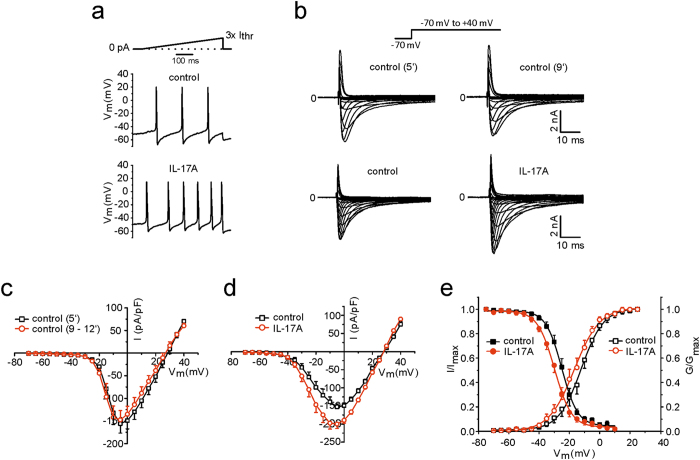Figure 7.
Effects of IL-17A on excitability and on TTX-resistant and TTX-sensitive Na+ currents in isolated and cultured DRG neurones. (a) Testing of the excitability of a neurone using a ramp-shaped current injection protocol. After application of IL-17A the first action potential appeared at a shorter latency (indicating that less current was necessary) and more action potentials were elicited during the ramp. (b) top: voltage-clamp recording from a control DRG neurone showing no increase of TTX-R Na+ currents between 5 min (5′, top, left) and 9 min (9′, top, right), bottom: voltage-clamp recording from another neurone showing an increase of TTX-R Na+ currents at 5 min after bath application of IL-17A. (c) I/V curve of control neurones (n = 10) at 5 min and at 9–12 min of recording. (d) I/V curve of control neurones (n = 11) before (5 min) and 5–7 min after bath application of IL-17A. (e) Normalised peak conductance (G/Gmax, open symbols) and steady-state inactivation (I/Imax, filled symbols) before (5 min) and 5–7 min after bath application of IL-17A.

